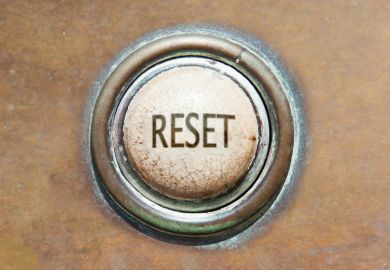What works when it comes to effective policy engagement? In an academic context where evidence of non-academic “impact”, “relevance” or “social value” is increasingly important, this question continues to grow in significance.
In recent years, the architecture of UK academe has evolved to explicitly nurture and support activities at the interface between research and policy. First-phase experiments, such as “what works” centres, catapults and observatories are now being finessed and built upon with a new layer of boundary-spanning initiatives, such as local policy and innovation partnerships, evidence-utilisation hubs, policy and evidence centres and regional economic development institutes.
At the same time, mobility across and between the academic and policymaking realms is being facilitated by established initiatives, such the Parliamentary Office of Science and Technology’s parliamentary fellowships, and new research funding investments, such as the Economic and Social Research Council’s public policy fellowships and the British Academy’s innovation fellowships. National organisations such as the Universities Policy Engagement Network (Upen) also help researchers engage with policymakers (and vice versa), and a similar role is played by an increasing number of transnational and international organisations, such as the African Research and Impact Network, the US’ Advancing Research Impact in Society and Research Impact Canada.
With this level of activity, investment and innovation, it’s probably not surprising that a lot of researchers appear to feel overwhelmed by the pressure to deliver evidence of non-academic impact, confused about the best way to navigate the research-policy interface, and uncertain about the politics of policymaking and how to avoid becoming a pawn in party-political posturing.
Having worked at the intersection of research and policy for more than two decades, I can attest to the fact that influencing policy is a messy business. Politics revolves around deal-making, compromise and bargaining. As such, policymaking is not the linear, rational endeavour depicted by textbooks and civil service guidance manuals. There are multiple “docking points” for those with something significant to contribute, but there is also high levels of churn among the people with whom academics might usefully engage.
It is also important to bear in mind that there is a big difference between influencing the public debate and influencing policy. And there is a potential gap between influencing policy and being able to prove that you have done so. Even when researchers have helped draft new guidance, regulation or legislation, there is no guarantee that politicians or officials will want to acknowledge that in public.
Academic reactions to these challenges range from resigned moaning about “the decline of donnish dominion”, as A. H. Halsey put it in 1995, to a form of academic hyperactivity whereby all manner of “pathways to impact” are deployed in the hope that at least some evidence of influence is identifiable.
But there is a far more efficient option. Effective policy influence is usually generated through a combination of three factors. The first is the existence of a relatively small number of high-trust, low-cost relationships between researchers and key policymakers. The second is a sophisticated political understanding of the context within which policymakers operate. And the third is the confidence to present research to the appropriate person, in an appropriate format at the appropriate moment.
In short, relationships trump structures. Long reports will rarely, if ever, be read. And key policymakers are too busy to attend events. Efficient and effective policy influence is likely to occur where the researcher has a pre-existing relationship with the key officials in the area(s) of policy they are most interested in. The key question any academic or research team might profitably seek to answer, then, is not “Should I publish a report or podcast?” or “Where should I hold a launch event?” but “Who are the five or six key people that I really need to get a precis of my research and why it matters in front of?
Once you’ve identified the people, or at the very least the key organisations, then it’s possible to start proactively building positive relationships.
And this is possible.
Civil servants, parliamentary clerks, regulatory officials and other members of the policy community are also under increasing pressure to innovate and engage beyond the “usual suspects” to identify new sources of useful information. Invitations to tour labs, explore field-testing sites or visit research centres will rarely, in my experience, be rejected.
Such bridge-building exercises – conducted in a quiet, informal and low-key manner – help open fresh, enduring lines of communication between academics and policymakers. These are “what works” when it comes to the vital work of influencing policy.
Matthew Flinders is professor of politics at the University of Sheffield and was chair of the UK's Universities Policy Engagement Network from 2020 to 2022. He has served as a special adviser in both the House of Lords and the House of Commons, and is a former ESRC impact champion.
后记
Print headline: For academia and policymakers, relationships are key to impact





